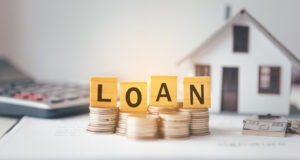Bad debts, the unrecoverable amounts owed to lenders, pose challenges in various industries. Whether arising from financial struggles, bankruptcy, or disputes, businesses face the need to navigate these losses. Employing proactive measures, such as careful client selection, upfront payments, and professional assistance, can mitigate the impact of bad debts, ensuring a healthier financial outlook for businesses.
INTRODUCTION
In simple words, debt is the total money you owe to a lender which is for a certain period. You will have to return the principal amount of money along with the interest rates at the end of the term. The amount of the debt approved depends on the creditworthiness of the borrower and usually the past credit history is taken into consideration. There are a variety of debts available such as business debt, revolving debt, joint debt, corporate debt, student loans, mortgages, etc. Each of them has their own set of rules and terms.
WHAT ARE BAD DEBTS?
Bad debts are outstanding debts that can no longer be recovered and hence must be written off. Incurring bad debts is inevitable in any business and there always exists a risk of having to write off a debt. debtors get into bad debt because they are not able to pay their debts because of their financial situation or bankruptcy. Usually, the creditors have exhausted all the options of legal action and collection activity before confirming the debt as bad debt.
TYPES OF BAD DEBT
Bad debts can be classified depending on the business models based on that such as traders and service providers incur bad debts when their customers can’t repay the amount for which he/she made the purchase or availed any of the services, a borrower may not be able to repay the loan availed to the lender and then this outstanding amount will become bad debt. Also, when there is a dispute between two parties and the court orders any of the parties to pay another party, but they fail to repay that payment, it is considered as bad debt. Even businesses that provide goods and services on credit face the problem of bad debts frequently.
EXAMPLE OF BAD DEBT
Let’s take the help of an example to understand bad debts. Suppose ABC is a manufacturing company of pens and it sells the goods to the retailers on a credit basis with the condition that the payment will be made within 30 days from the date of purchase. However, after 30 days, the retailer is not making the payment and after multiple failed payments the manufacturers will have to consider the amount as bad debt.
METHODS OF CALCULATING BAD DEBT EXPENSES
There are two ways in which businesses can account for bad debt expenses.
- WRITE-OFF METHOD
Under this method, the irrecoverable amount is written off to the receivables account. When it is clear that a customer can’t repay the amount, this amount is directly charged to bad debt expense and then it is removed from the accounts receivable. Bad debt expenses are debited and the accounts receivable account is credited.
However, this method has drawbacks. This method records the exact amount of the irrecoverable amount and it can also be used to write off smaller amounts of debts, but it fails to align with Generally Accepted Accounting Principles (GAAP) and the matching principle used in the accrual accounting. According to this principle, the expense must be accounted for at the time of the transaction rather than the time when the payment is made. That’s why it’s not the best way to recognize bad debts.
- ALLOWANCE METHOD
In this method, the bad debts are taken into consideration even before they occur. An allowance for the doubtful debt will be made based on an estimated figure. This will debit the bad debt expense account and credit the allowance for bad debt accounts. The unpaid accounts receivable will be cleared by the year’s end and it will be drawn in the allowance account.
CAUSES OF BAD DEBTS
Some of the main causes of bad debts are low-income levels, unemployment, unexpected expenses, bad spending habits, medical expenses, bad money management habits, divorce, educational expenses, high living costs, etc.
WAYS TO PREVENT BAD DEBTS
- CHOOSING YOUR CLIENTS AFTER CAREFUL CONSIDERATION
It’s very important to choose clients carefully. Choose clients who have a good reputation regarding their payment or have a good stable income which will ensure timely payments. This can be done by checking their social media, website, etc. avoid clients with a history of missed payments.
- MONEY UPFRONT
When you ask for money upfront before providing the goof or service, it gives a clear idea to the customer that you are serious about your business and any default in the payment will be taken seriously. Also, it will ensure that in case the customer is not able to make the payment at a later stage you don’t lose all of your money.
- USE PROFESSIONALS
Managing and keeping track of debts in a business can be very difficult. By hiring professionals such as lawyers and debt collectors you can figure out the most efficient way to recover the debt. it will also give a reputation to your business that you are serious about your payment, defaulting to which will be taken seriously.
- RESOLVING DISPUTES QUICKLY
Customers often use disputes as a means of delaying their payment which can severely affect your business. The faster you resolve the disputes the earlier you can get hold of your money.
- FOLLOW YOUR TERMS
Always stick to your terms and conditions and never entertain customers who don’t pay their payments on time. It may cause you some loss in the initial days however in the long term it will save you from many bad debts. Similarly, do not extend credit to those who exceed their credit limit.
- METICULOUS PROCESS FOR PAYMENT
Have a good payment process and send reminders to customers for the payments. It will ensure that the customer will have you in mind while paying their debts.
- PENALTIES
By setting penalties for late payments, you can ensure that the customers are well aware of their payment and they will not risk missing it.
CONCLUSION
In conclusion, we have seen above that bad debts are debts that can no longer be recovered from the borrower. Bad debts can be written off by two methods, the write-off method and the allowance method. However, the allowance method is preferred because write-off method doesn’t align with the GAAP and the matching principle of accrual accounting. There are some ways in which bad debts can be avoided such as choosing clients carefully, setting penalties for delayed payments, following terms, and hiring professionals among others.
This article is written by Purbasha Parui, a 1st-year law and finance enthusiast from BMS College of Law, Bangalore.




